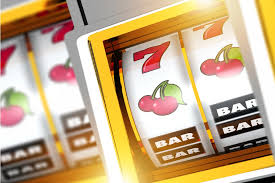Gambling is a complex activity that mixes excitement, chance, and human psychology. For many people, gambling adrenaline and perception create a form of entertainment filled with adrenaline rushes and social interaction. However, gambling can quickly shift from fun to risky behavior, leading to serious financial and emotional consequences. Understanding the role of adrenaline and perception can help gamblers enjoy the thrill while avoiding dangerous pitfalls.
The Thrill of Gambling: The Role of Adrenaline
When you gamble, especially in fast-paced games like poker, roulette, or sports betting, your body often reacts as if you were in a high-stress situation. The uncertainty of winning or losing triggers the release of adrenaline, a hormone responsible for the “fight or flight” response. This adrenaline rush can make gambling highly stimulating and addictive because:
-
Heightened focus: Your senses sharpen, and you feel more alert.
-
Emotional highs: Winning activates dopamine release, producing feelings of pleasure and reward.
-
Social bonding: Playing with others can amplify excitement and create a sense of community.
This combination creates the sense of fun and entertainment that many gamblers seek.
Perception of Control and Luck
A crucial aspect of gambling enjoyment is the perception of control. People tend to believe that their skill, intuition, or lucky streak can influence outcomes, even in games largely governed by chance. This perception encourages continued play and can make the experience more engaging.
However, this can be misleading:
-
Illusion of control: Players may overestimate their ability to predict or influence outcomes.
-
Gambler’s fallacy: The belief that past results affect future outcomes (e.g., “I’m due for a win”).
-
Selective memory: Remembering wins more vividly than losses reinforces optimistic bias.
When Does Gambling Become Risky?
Gambling turns risky when the balance between fun and harm is lost. Here are some red flags:
-
Chasing losses: Continuously betting more to recover lost money.
-
Ignoring limits: Spending more time or money than planned.
-
Emotional dependence: Gambling to escape stress, loneliness, or depression.
-
Financial problems: Borrowing money or neglecting bills to gamble.
-
Impact on relationships: Withdrawal from family or friends due to gambling.
These behaviors can lead to gambling addiction, a serious condition that requires professional help.
How to Keep Gambling Fun and Safe
-
Set strict budgets: Only gamble money you can afford to lose.
-
Establish time limits: Avoid extended gambling sessions.
-
Stay aware of emotions: Don’t gamble when stressed or upset.
-
Educate yourself: Understand odds and the nature of chance.
-
Seek help early: If gambling causes distress, talk to support groups or professionals.
Conclusion
Gambling can be a thrilling, adrenaline-fueled form of entertainment when approached responsibly. The key lies in understanding how adrenaline and perception influence your experience and recognizing when gambling crosses the line into risk. By staying informed and setting boundaries, you can enjoy the excitement without jeopardizing your well-being.



